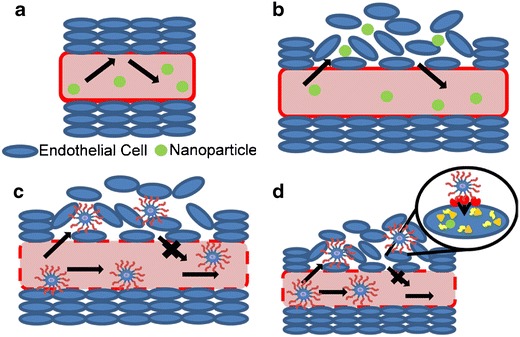Fig. 3.

The EPR effect and targeting nanoparticles. Normal endothelial cells line the vasculature forming a barrier that prevents nanoparticle entrance (a). However, tumors form a leaky vasculature that allows small nanoparticles entrance and exit from the vasculature to the extracellular space (b). Larger PEGylated nanoparticles gain access to the extracellular space of the tumor and their larger size cause them to become trapped (c). Targeted nanoparticles also gain entrance into the tumor through the EPR effect, but the multivalent ligand receptor interactions result in cellular uptake of the nanoparticle where the therapeutic cargo can be released
